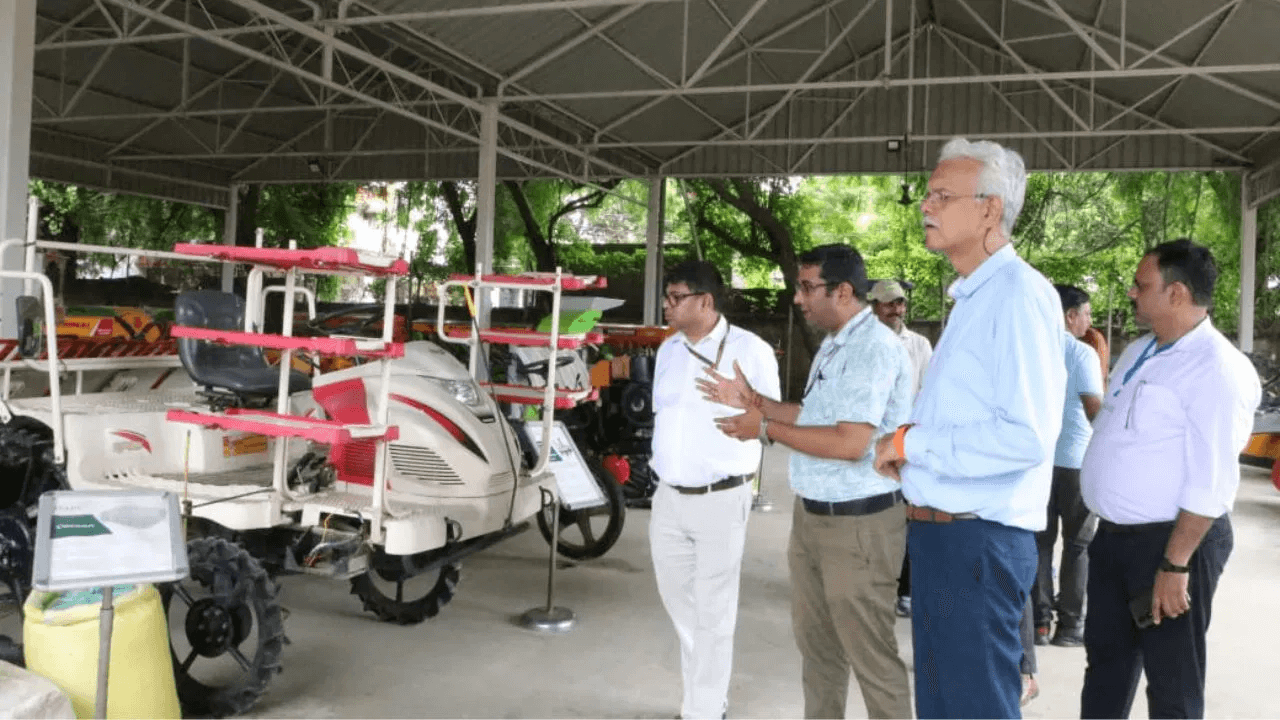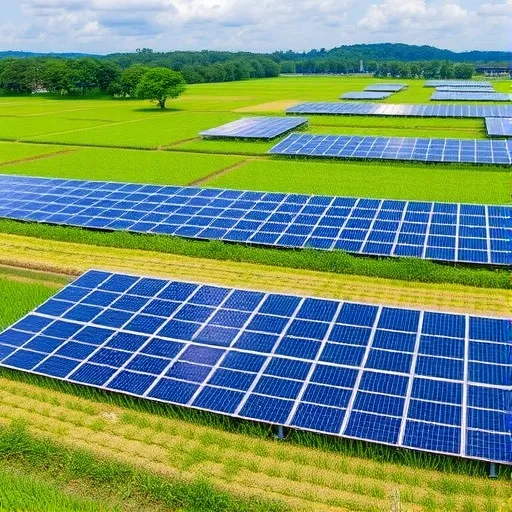Tags
Weather-resilient rice farming promises

A successful and extensive implementation of WFBAS in rice production would help to achieve Sustainable Development Goal 2.4, which focuses on rice productivity and profitability for farmers as well as long-term food security, writes Niaz Md Farhat Rahman
THE agricultural sector plays a vital role in promoting its economic growth. The contributions of agriculture and the crop subsector to the gross domestic product are about 13.47 per cent and 6.77 per cent, respectively. Rice is the main staple crop in Bangladesh, supplying more than 80 per cent of the total consumed food and contributing 60 per cent of the total required protein. The country ranks third in the world in rice production.
The contribution of rice farming, with a share of about 70 per cent, to the agricultural GDP is significant. Nearly 48 per cent of total rural employment in Bangladesh is directly or indirectly involved in rice production, and more than 13 million farms grow rice in an area covering some 11.77 million hectares, accounting for 78 per cent of the total agricultural crop production.
The weather significantly influences crop growth, maturity, yields, pest and disease prevalence, and water and fertiliser needs. Furthermore, the weather also has an impact on the quality of crops during their movement from the field to warehousing and then to the market. Adverse weather can affect the quality of products during transportation, as well as the viability and vigour of seeds and planting material during warehousing.
Crops and cropping systems must be matched to the meteorological requirements for maximum yield in a specific area, and pest- and disease-prevalent seasons must be avoided. Short-period meteorological data, either routine or analysed (like initial and conditional probability), play a significant role in strategic crop and cropping practice planning.
Usually, farmers cultivate in a weather-blind situation for several hours. Therefore, variations in weather and extreme weather events frequently damage crops, and farmers do not take any precautionary measures. Moreover, the benefit of favourable weather events (eg, fertiliser application on a sunny day or reduction of irrigation for the next hours or days of rainfall) remains unexploited. Weather-smart farming would consider the weather forecast and translate it into advice for farm operations to reduce the risk of adverse weather events and utilise the benefits of favourable weather events.
Agricultural weather forecasts give the required meteorological messages to guide farmers in making decisions in time about particular field activities. The impact of weather irregularities on a given crop depends on different cropping stages and on the location. The Weather Forecast-based Advisory Service under Weather Resilient Rice Cultivation Technology developed by Agromet Lab of Bangladesh Rice Research Institute is a crop management system that uses weather forecasts to generate location-specific and crop growth-stage-wise advisory services.
WFBAS is an effective concept and technique for weather as well as weather-smart rice production in Bangladesh. It can help farmers and decision-makers make appropriate rice crop management decisions for various weather conditions ahead of time. It would lessen risk as well as allow farmers to take advantage of favourable weather circumstances.
For the first time, the BRRI Agromet Lab reported on the performance of WFBAS and traditional farming practices regarding yield enhancement, profitability, and the risk of rice cultivation in different regions of Bangladesh.
The experimental findings of the BRRI Agromet Lab reveal that farmers who practice weather-resilient rice cultivation technology can enhance grain yield by 7 per cent, about half a tonne more than traditional. The study found strong evidence that management was a significant contributor to enhancing rice yield rather than choice of variety.
Nevertheless, the effective utilisation of weather information can significantly decrease overall crop losses. Furthermore, the optimal and timely use of inputs in the WFBAS system can lower production costs by an average of 13 per cent. In terms of risk, WFBAS is better than FP, despite the greater environmental variance. Moreover, WFBAS provided a scope to protect the environment with the minimum residual effect of fertiliser and pesticides. It also reduced the pressure on groundwater by ensuring efficient water management. Overall, farmers can earn an additional US$229.33 per hectare from Boro rice following the WFBAS instead of FP because WFBAS is less cost-intensive (e.g., low production cost) but more productive (eg, higher yield) than FP.
The WFBAS technology was about 31 per cent more profitable than the FP technology. WFBAS is considered an important means to improve farm outcomes by aiding the decision-making of the farmers about various operations (such as sowing, fertiliser application, irrigation, and plant protection) well ahead of time. Around 2 kg more seeds were used with FP technology. FP was found to be more labour-intensive than WFBAS. Farmers used almost 840 labourer hours per hectare on average under FP, whereas it was around 720 labourer hours under the WFBAS management system.
The farmers who followed the WFBAS were able to reduce their use of fertiliser by 16 per cent and irrigation water by 23 per cent while maintaining or even increasing their yields compared to those who did not follow that system. We also found in this study that farmers who followed WFBAS were able to reduce their use of herbicides by 52 per cent, insecticides by 40 per cent and fungicides by 26 per cent while maintaining or even increasing their yields compared to those who did not receive the services. Finally, the farmers benefited from higher income through yield enhancement, reduction of the costs of production, and reduction of risk.
The impact study results of the sensitivity analysis revealed that the adoption of WFBAS technology will stimulate total rough rice production by 0.172 million tonnes if only 5 per cent adoption rates can be ensured. We have valued the farmers’ additional benefit by adopting WFBAS technology in terms of actual (18.25 BDT per kg) as well as the government-declared rough rice farm-gate prices (26.00 BDT per kg) during 2018–19. The results showed that the nation will benefit from adding BDT 3143 million if only 5 per cent of farmers adopt the WFBAS. However, if the government-declared price can be ensured, the benefit can be BDT 4478 million.
We have already set a target of bringing 3 per cent of total farmers under the WFBAS by 2025 and 5 per cent by 2030. The forecast results showed that rough rice production would increase by 0.119 million tonnes if the adoption goal of 3 per cent is met by 2025 and that would be 0.214 million metric tonnes for 5 per cent adoption by 2030. Therefore, the investment in the dissemination of the WFBAS in the smart farming process will be beneficial for sustainable rice production and increase farmers’ income.
Finally, a successful and extensive implementation of WFBAS in the rice production system would assist Bangladesh in achieving Sustainable Development Goal 2.4, which focuses on rice productivity and profitability for farmers as well as the long-term food security of the country.
https://www.newagebd.net/article/227788/weather-resilient-rice-farming-promisesPublished Date: March 13, 2024






